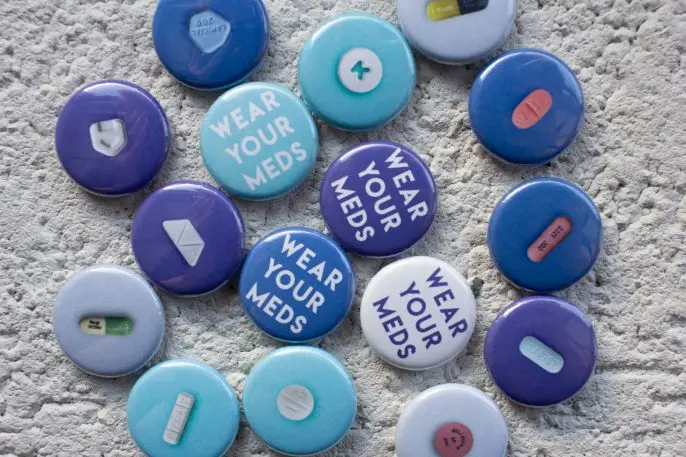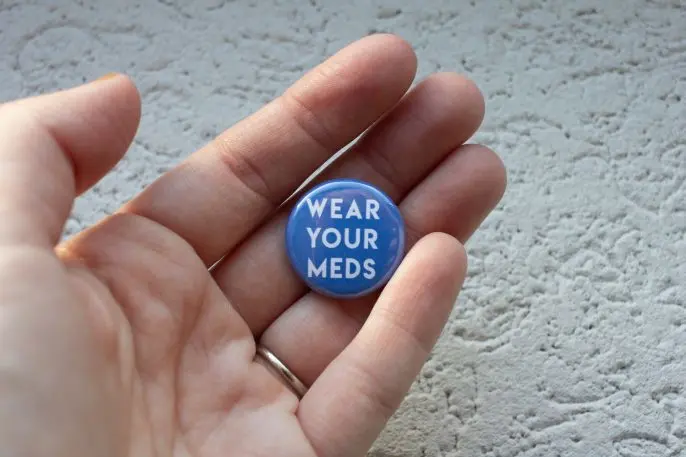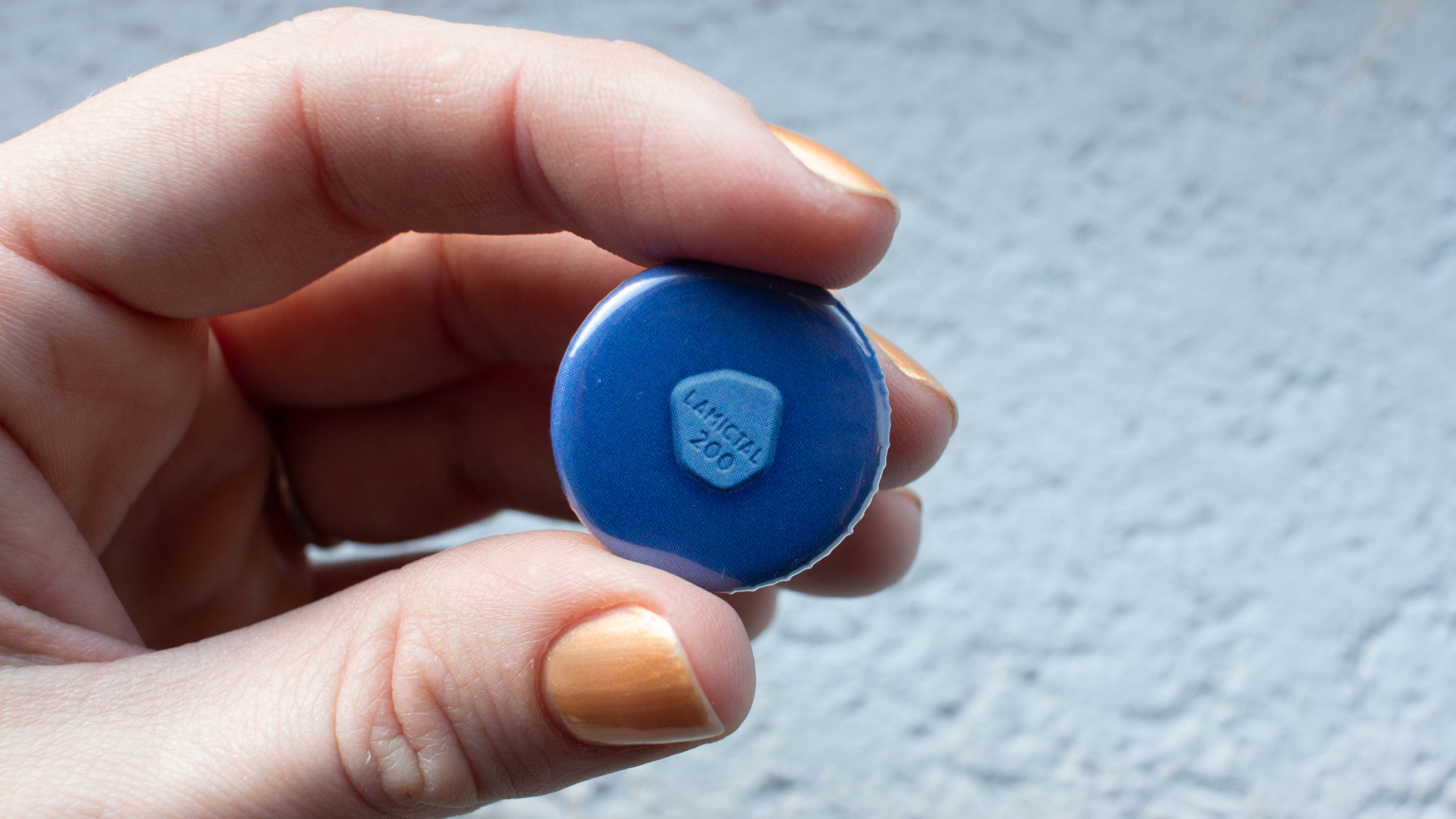Attached to a backpack or a jacket, these simple new buttons aren’t easily recognizable; on a plain blue background, a tiny pink pill just says “G221-300.” But it’s clear that it’s medication, and for those who wear it, it’s meant to start a conversation. The button, which depicts lithium, is one of a set of buttons that each show a different medication for mental illness. Some of the pills are stamped with their names, like Xanax or Wellbutrin. For the wearer, it’s a way to signal an openness to talk about mental health.
The image of the pill is a “symbol that represents the story you want to tell, and a gateway into your personal story,” says Lauren Weiss, an advertising and copywriting student at Miami Ad School in New York City who created the series of buttons. Weiss, who started working on the project as a class assignment, was inspired in part by watching the comedian Chris Gethard talk openly about his own mental illness–which inspired her to see a therapist and psychiatrist, and eventually to start taking medication herself for bipolar disorder. She decided to be vocal about her experience to help others feel less stigma about the idea of treatment.

The buttons are a subtler version of her own activism. “I know that not everybody wants to be an activist about mental health,” she says. “With something like the buttons, I think it’s a little more accessible for people who maybe are open to sharing their story, but don’t want to be shouting about it on the streets. They can have this button, and it’s an easy way for people to see it and maybe ask about it.” A second button, with the message “wear your meds,” gives people the opportunity to be more explicit about the intent of the buttons.

She recognizes that many people don’t yet feel comfortable being open about mental illness–and medication in particular. Some people have told her that they worry about being ostracized if they wear the buttons in their communities or to work. Some have even said that they worry about being fired, despite the fact that firing someone on the basis of mental illness is illegal. As someone in a creative community where the conversation is easier, she feels a responsibility to speak out.
“People like me who are talking about this from a position of privilege, in a community where we can feel safe talking about it, are the people who ultimately have to do the heavy lifting and have to do the work around this in order for that stigma to start to be lifted for people in communities that don’t feel comfortable talking about it right now,” she says.
Though the project started as an academic assignment, Weiss plans to carry it forward. Proceeds from the sales of the buttons are donated to the National Alliance on Mental Illness.
Recognize your brand’s excellence by applying to this year’s Brands That Matter Awards before the early-rate deadline, May 3.
